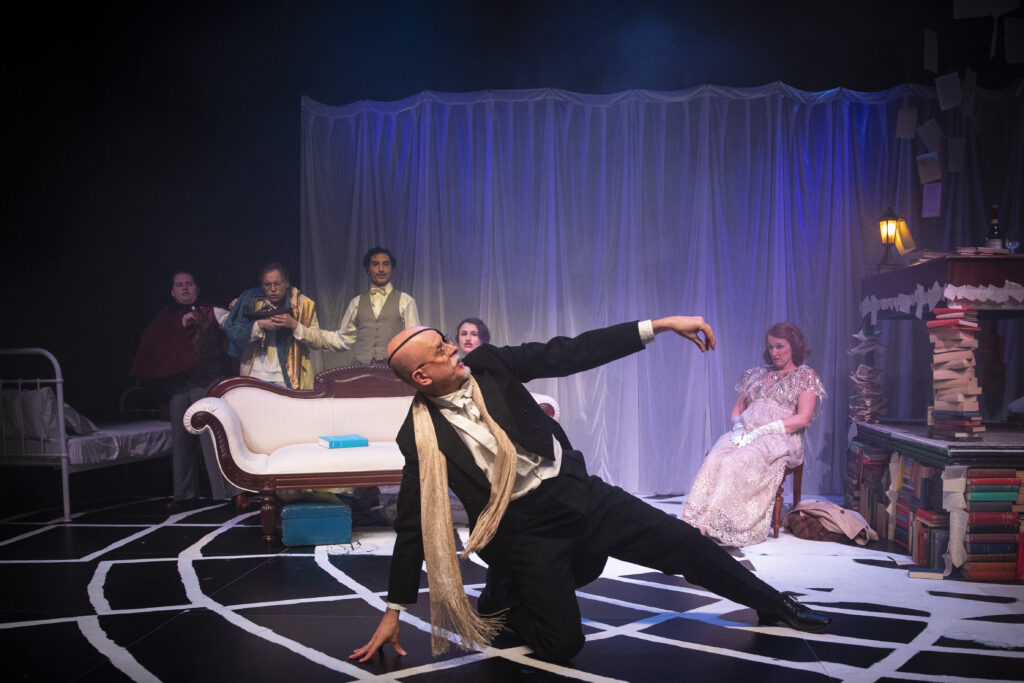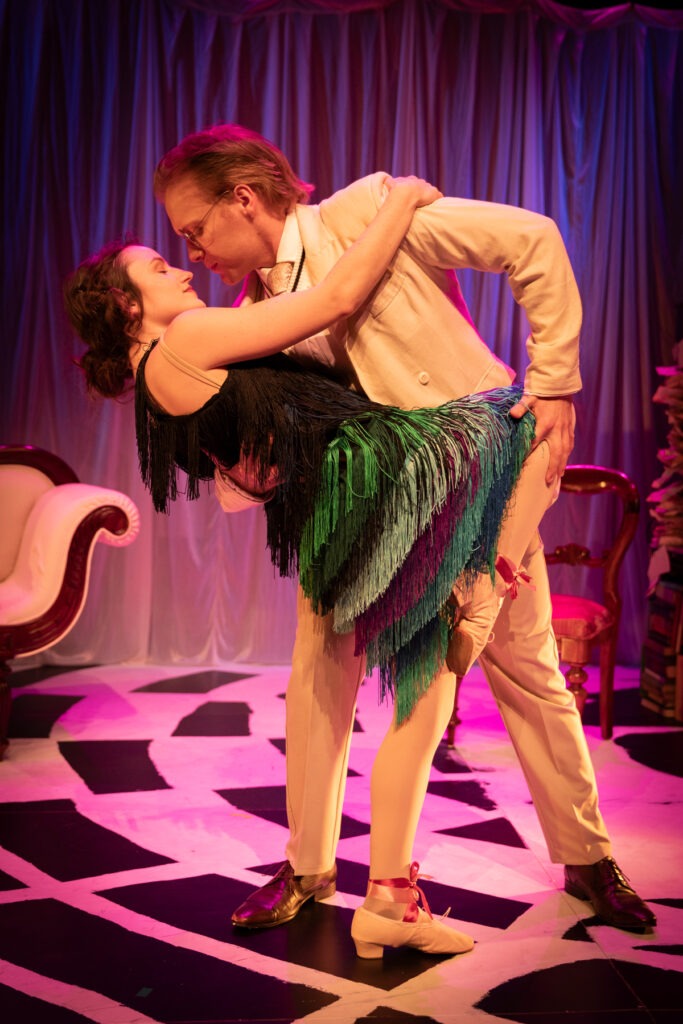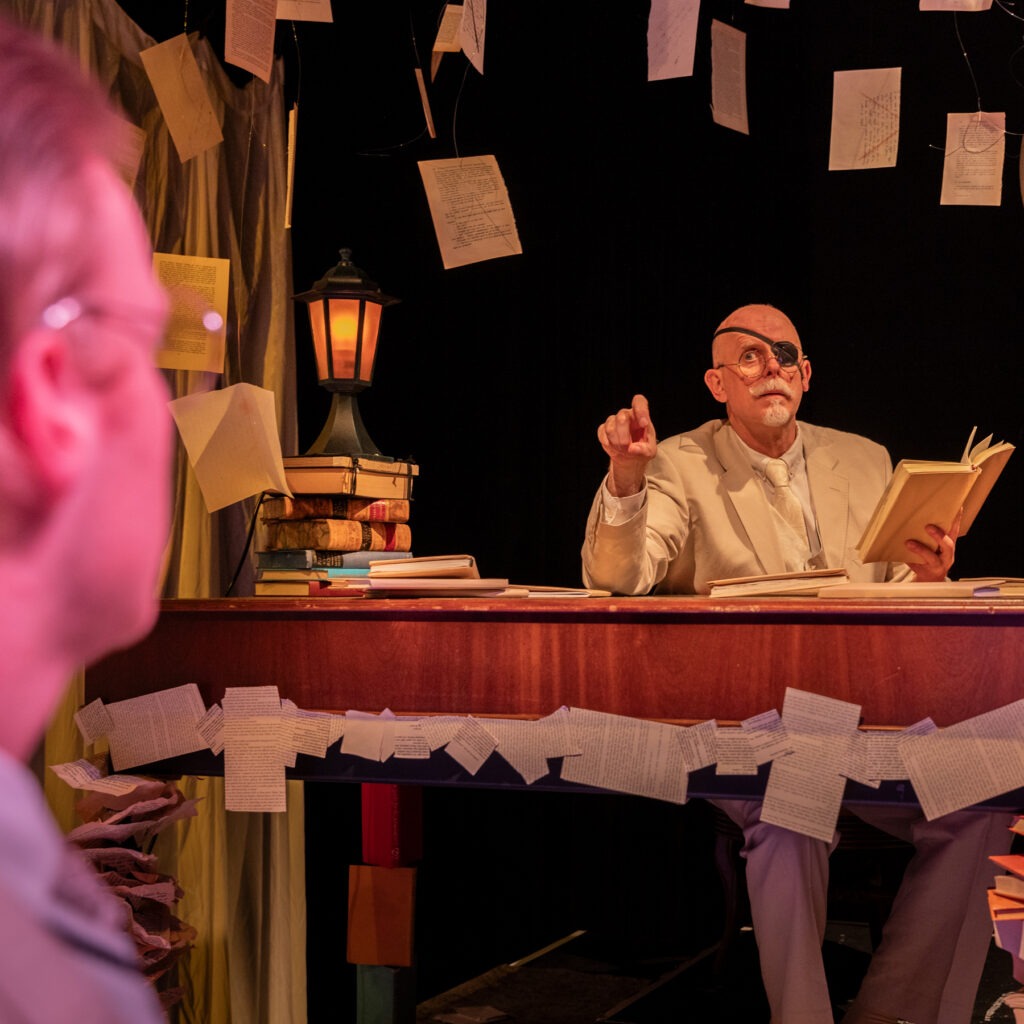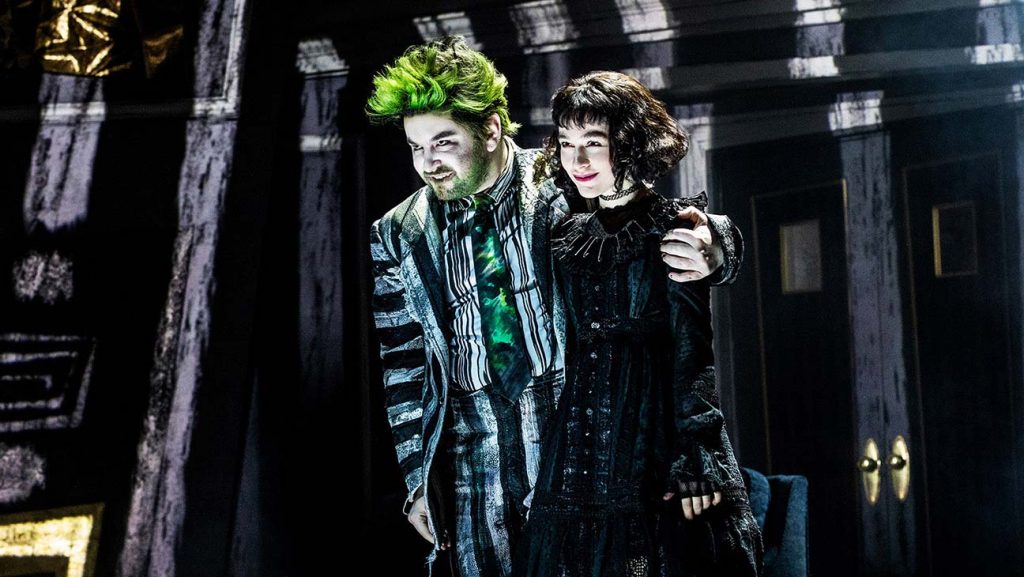
‘Samuel Beckett and The Rainbow Girl’ // Bloomsday in Melbourne
‘Samuel Beckett and The Rainbow Girl’ was genius.
Genius, love, madness and violence in 1920s Paris.
Set in the often-romanticised literary scene of Paris in the late 1920s, ‘Samuel Beckett and the Rainbow Girl’, tells the story of the paradoxical, twisted love triangle of Samuel Beckett (Jeremey Harland) as an almost sycophantic disciple of James Joyce (Tref Gare) and Joyce’s admiration for Beckett which later becomes paranoia and jealousy. The third participant in the triangle is Joyce’s daughter Lucia (Mary Anges O’Loughlin) with an adoration, bordering on obsession for Beckett.
Mary Anges O’Loughlin carries most of the play. It’s a hard part to pull off convincingly, as she juggles between a manic-pixie, dutiful daughter, ambitious artist and someone desperately struggling with mental illness issues in a time when mental health treatment was only still in its infancy. Overall, O’Loughlin is charming in her portrayal and remarkably portrays the desperation and the almost childlike innocence of Lucia, which essentially drives the plot. How does a young woman truly express herself in a conventional and patriarchal world? Sensuality and jazz/flapper sentiments shine through O’Loughlin’s performance as the young woman rebels against familial and societal conventions.
A series of romantic misunderstandings, at first comic, but rapidly becoming more absurdist and finally tragic, break Lucia from her promising dancing career as she falls deeper down a rabbit hole of mental illness and despair. This magnifies the dysfunction and disillusionment of Joyce, his long-term partner Nora (Carissa Macpherson) and their son Georgio (Daniel Cook).
Gare’s Joyce revealed the melancholic and paranoid nature Joyce was infamous for, as well as a gaiety and vibrance for life that one feels when reading Joyce’s Ulysses or singing a hearty Irish drinking song. There are traces of ‘King Lear’ in Gare’s performance, flashes of menace and cruelty that dance around an absent-mindedness. The usual genius at work motif is at play here.
Harland’s portrayal of Beckett was restrained, showing an interesting interpretation of a young, yet somewhat jaded artist looking for inspiration, searching for a voice, and quickly seeing the rose-tinted glasses he viewed Joyce from. Harland’s chemistry with O’Loughlin’s Lucia juxtaposes between a cold aloofness and an adolescent, yet innocent passion. Harland pulled off the big ask of portraying Beckett on stage, yet an actor with his talent did not seem to be given a lot to work with.
Carissa Macpherson’s Nora shows an insight into the long-suffering wife of the great artist and the daily struggle of dealing with his fame. She also plays the nurse who treats Lucia in the ‘sanatorium’; initially it was a little confusing as her voice and demeanour barely changed between the roles.
Daniel Cook does a decent job as Georgio Joyce, James and Nora’s only son, who himself has aspirations to be a singer. It is a rather under-utilized role, which does not give him much room to move. He also plays the infamous, pimp, Prudent, who stabbed Beckett in the streets of Paris. The change of character on stage is distracting, the entire exchange in French giving the impression that the man himself is soliciting Beckett and not trying to promote his brothel.
Paolo Bartolomei plays Tomasso Grigio, Beckett’s best friend and the man who introduced Beckett to Joyce. Bartolomei brings his considerable presence to both the role of Grigio and the role of a polio-afflicted doctor who treats Beckett after the famous stabbing incident in the streets of Paris.
The play was written and co-produced by academic, Steven Carey and his zeal regarding Joyce and his Parisian adventure shines throughout the work. However, knowing too much about a subject can sometimes be a hindrance. The play is longer than most plays in Melbourne these days, which in and of itself is not necessarily a bad thing, however, the performance does drag considerably in some scenes.
The set, special effects and scenery are all impressive, especially the pulpit-style design of Joyce’s desk upon high, with literal floating ideas, letters, memos, etc. that the actors use as props throughout.
The play really flourishes, when it deals with the relationships between Joyce and Nora, Joyce and Lucia or Nora and Lucia it soars. At times there seem to be too many other ideas and sub-plots trying to take over resulting in an almost fevered dream of stream-of-consciousness and absurdism.
‘Samuel Beckett and the Rainbow Girl’ was directed by Carl Whiteside and is a part of the 31st Annual Bloomsday Festival in Melbourne.
‘Samuel Beckett and the Rainbow Girl’ runs until Sunday 23 June 2024 at South Yarra’s Irene Mitchell Studio.



Photography by Jody Jane Stitt.






